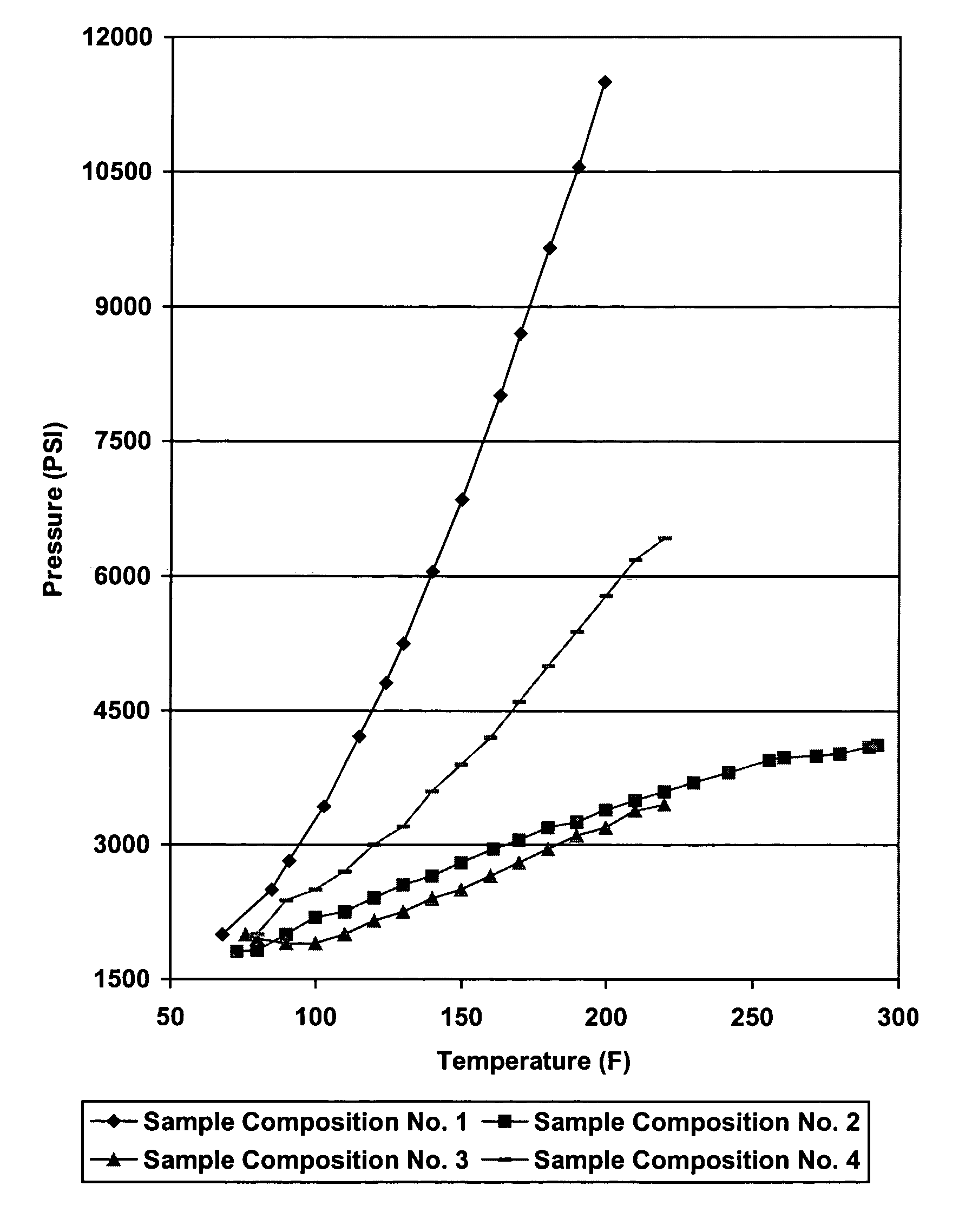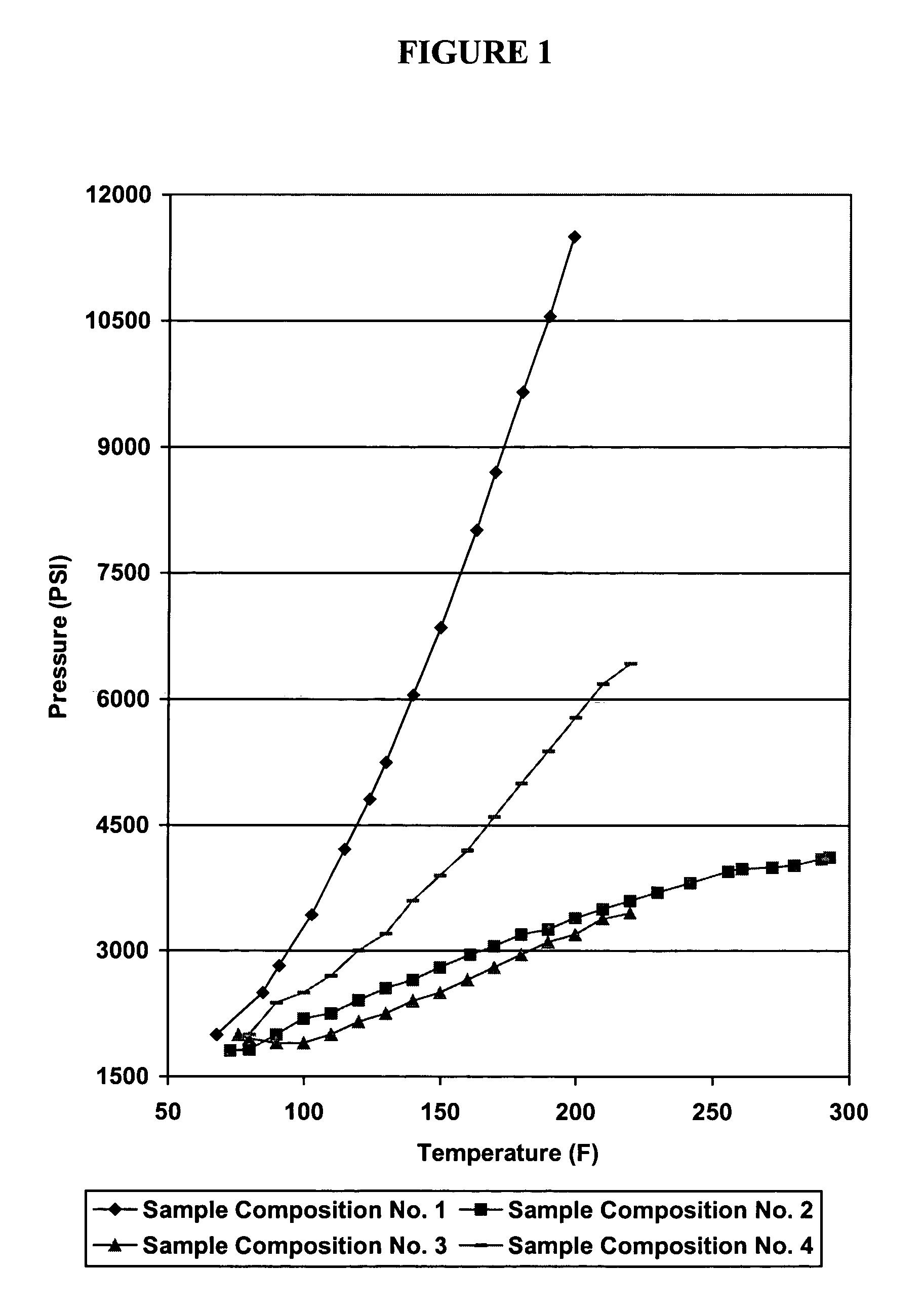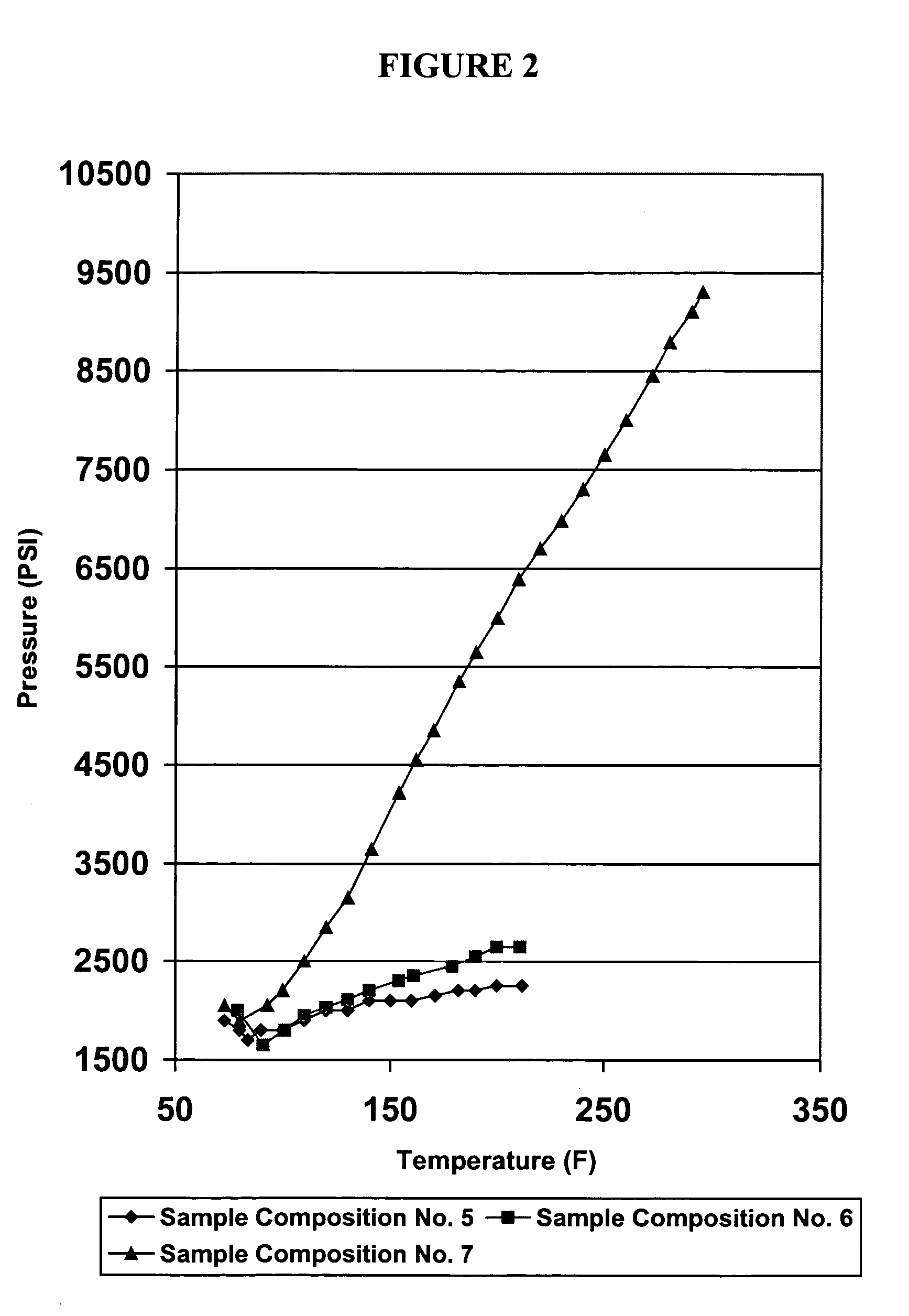Well fluids and methods of use in subterranean formations
a technology of fluids and wells, applied in the field of improved well fluids, can solve the problems of affecting the operation of wells
- Summary
- Abstract
- Description
- Claims
- Application Information
AI Technical Summary
Benefits of technology
Problems solved by technology
Method used
Image
Examples
examples
[0035]Sample fluid compositions were prepared comprising water and a volume of hollow particles. The sample fluid compositions initially comprised 500 mL of water, to which a solution of 280 mL water and a portion of hollow particles were added. The portion of hollow particles added to each sample composition was sized such that the portion of hollow particles comprised about 39% by volume of each sample composition. After each sample composition was prepared, it was placed in a high temperature high pressure (“HTHP”) cell and pressurized to about 2,000 psi. This pressure is believed to be representative of the initial placement pressure typical of at least some well bore installations. The temperature of the HTHP cell was elevated from room temperature to temperatures that are believed to be representative of those that may be encountered in at least some casing annuli due to, inter alia, production operations.
[0036]Sample Composition No. 1 comprised only water.
[0037]Sample Composi...
example 2
[0046]Sample fluid compositions were prepared comprising water and a volume of hollow particles. The sample fluid compositions initially comprised 750 mL of water, to which a solution of 280 mL water and a portion of hollow particles were added. The portion of hollow particles added to each sample composition was sized such that the portion of hollow particles comprised about 19.5% by volume of each sample composition. After each sample composition was prepared, it was placed in a high temperature high pressure (“HTHP”) cell and pressurized to about 2,000 psi. This pressure is believed to be representative of the initial placement pressure typical of at least some well bore installations. The temperature of the HTHP cell was elevated from room temperature to temperatures that are believed to be representative of those that may be encountered in at least some casing annuli due to, inter alia, production operations.
[0047]Sample Composition No. 5 comprised a total of 1,030 mL of water ...
example 3
[0055]A sample fluid composition was prepared comprising about 230 mL of water. Sample Composition No. 8 was then placed in an Ultrasonic Cement Analyzer that is commercially available from Fann Instruments, Inc., of Houston, Tex. Once within the Ultrasonic Cement Analyzer, Sample Composition No. 8 was pressurized to about 2,500 psi. This pressure is believed to be representative of the initial placement pressure typical of at least some well bore installations. The temperature of the HTHP cell was elevated from room temperature to temperatures that are believed to be representative of those that may be encountered in at least some casing annuli due to, inter alia, production operations.
[0056]The results of the test are set forth in the table below, as well as in FIG. 3.
[0057]
TABLE 8Sample Composition No. 8Differential PressureTemperature (° F.)Pressure (psi)(psid)103250001052750250110300050011532257251203500100012538251325130415016501354500200014048002300145520027001505600310015560...
PUM
| Property | Measurement | Unit |
|---|---|---|
| failure pressure ratings | aaaaa | aaaaa |
| failure pressure rating | aaaaa | aaaaa |
| failure pressure rating | aaaaa | aaaaa |
Abstract
Description
Claims
Application Information
 Login to View More
Login to View More - R&D
- Intellectual Property
- Life Sciences
- Materials
- Tech Scout
- Unparalleled Data Quality
- Higher Quality Content
- 60% Fewer Hallucinations
Browse by: Latest US Patents, China's latest patents, Technical Efficacy Thesaurus, Application Domain, Technology Topic, Popular Technical Reports.
© 2025 PatSnap. All rights reserved.Legal|Privacy policy|Modern Slavery Act Transparency Statement|Sitemap|About US| Contact US: help@patsnap.com



